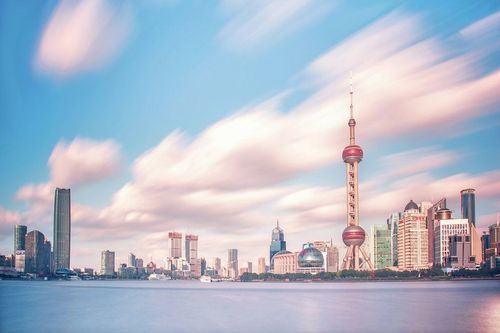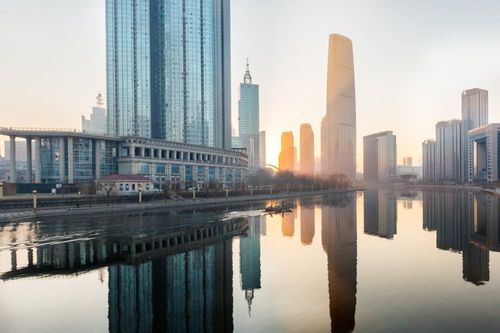Deneb Rodríguez•Oct 13, 2024
Do you want to travel to Shanghai Province in China but don’t know anything about it? This is the ultimate guide about Shanghai Province in China that you need to read before traveling. Know everything about the history of the place, the top landmarks you must visit, and travel tips for first visitors.

Photo by Zhang Kaiyv on Unsplash
A Glimpse into Shanghai’s Rich History
Shanghai is located on the Yangtze River delta. Until 1842, Shanghai was just a small fishing village. After the Opium War, the British made Shanghai a treaty port, allowing foreign involvement.
Then, the village quickly became a city. It was split into areas run by the British, French, and Americans. These areas were not part of China. Each colonial power brought its own culture, architecture, and society.
This mix of cultures therefore made Shanghai open to Western ideas. Finally, Shanghai became an important trading port that attracted foreign businesspeople and Chinese migrants.
Shanghai’s Strategic Geographical Location
Shanghai means “upon the Sea” in Chinese, which has a profound significance with its prime location at the mouth of the Yangtze River. This strategic positioning has been a key factor in shaping Shanghai’s historical and contemporary importance.
The city’s evolution can be directly attributed to its position where one of the world’s largest waterways meets the sea.
Shanghai is a melting pot of cultures and commerce because it is a convergence point for trade routes. This made the city a cosmopolitan center long before globalization. Goods, ideas, and people flowed to and from Shanghai, making it a global city.

Image by fanjianhua on Freepik
Economic and Commercial Significance
Shanghai is a global metropolis and a major economic hub in China. It is also home to the world’s busiest and most connected port, which handles more than 47 million TEUs (twenty-foot equivalent units) of cargo every year.
The port of Shanghai is a vital link in the global supply chain, facilitating trade and commerce between China and the rest of the world.
Shanghai’s largest export destination as of July 2022 was the United States, followed by Japan, Hong Kong, Taiwan, and Germany. The largest importers include Japan, the United States, Germany, Taiwan, and South Korea. The port also has close trade ties with other regions in Asia, Europe, Africa, and Latin America.
The Climate of Shanghai: What to Expect
Shanghai has a subtropical monsoon climate with four distinct seasons and abundant rainfall. The weather in Shanghai is generally mild and humid throughout the year, and it is often cloudy and overcast.
Shanghai is prone to typhoons, with over 60% of annual rainfall concentrated between May and September, with occasional downpours. There are four distinct seasons: spring is warm, windy, and pleasant; summer is hot and humid; autumn is short and cool; winter is cold and overcast.
Administrative Divisions of Shanghai
Shanghai Province in China is divided into 16 districts, some of the key districts are:
- Huangpu District is the core of downtown Shanghai, hailed as the “heart, window, and name card” of the city.
- Jing’an District serves as an important window for Shanghai to the outside world.
- Changning District is home to Shanghai’s first CBD for foreign enterprises and is a major contributor to Shanghai as an international trade center.
- Hongkou District is a core functional zone of Shanghai’s central business district and is one of the key development areas along the Huangpu River.
- Minhang District is an overlapping functional area of the Hongqiao International Hub for Opening, up the scientific innovation center in southern Shanghai and the integrated development of the Yangtze River Delta region.
Top Attractions and Cultural Highlights
These are some of the must-see sights and cultural experiences that make Shanghai Province in China unique:
- The Bund: It is a gallery of international architecture, where you can see various architectural styles from Gothic, Baroque, and Romanesque to Classicism and the Renaissance.
- The Pearl TV Tower: It is 468 meters, perfect to have an all-around panorama view of Shanghai.
- Zhujiajiao Ancient Town: Known as the “Venice in Shanghai” you can take the traditional boat to cruise along the canals and see the old residences, shops, and bridges that are filled with classic architectural beauty.

Image by TravelScape on Freepik
Insider Tips for Visiting Shanghai
These are some practical advice for travelers on navigating the city:
- Language: Mandarin Chinese is the official language but in tourist areas, some locals speak basic English. Learning a few key phrases in Mandarin can be very helpful.
- Translation Apps: Apps like Google Translate or Pleco are useful for communication.
- Metro System: The Shanghai metro is extensive, efficient, and easy to use. It has English signage, which makes it easy to use for non-Chinese speakers. Use a Shanghai Public Transportation Card for metro, buses, and taxis.
- Taxis: Few drivers speak English. Use apps like Didi Chuxing or have your destination written in Chinese.
Best Times to Visit Shanghai
March to May (spring) and late September to November (autumn) are the best times to travel, with comfortable temperatures, fewer tourists, and less rain. The rising temperature in spring offers a short sweet spot for travel.
Although it is chilly to visit Shanghai in winter, you may encounter some folk activities celebrating Chinese New Year. At the same time, in summer the night scenery along the Bund and the Huangpu River is stunning.
Stay Connected with Yoho Mobile
Stay connected on the go with Yoho Mobile’s eSIM. Don’t miss out on the chance to share your experiences in Shanghai Province in China with your loved ones, search for the best attractions, or check the weather forecast. Yoho Mobile has great prices and a wide range of data plans to suit your needs.
🎁 Special Discount for Our Readers!
As a special treat for our readers, Yoho Mobile is offering an exclusive discount! Use our coupon code “YOHOREADERSAVE” to get your first order for FREE!
Don’t miss out on this opportunity to stay connected affordably while exploring China.
